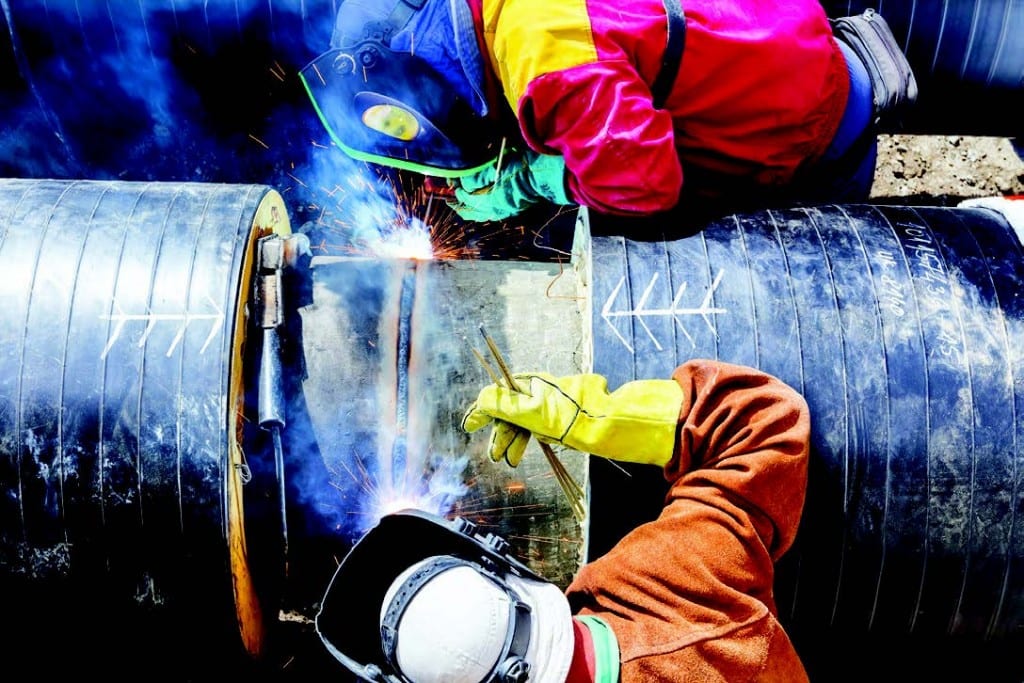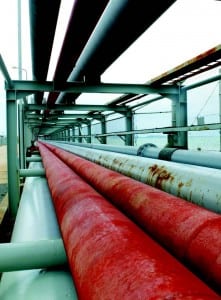Oil and gas pipeline installations are coming under growing scrutiny from industry regulators. Hugh Davies of pipe inspection specialist OMS discusses how new technology can help pipeline installation contractors meet these more stringent engineering and safety requirements.

Over the last few years, a series of international incidents have high- lighted inadequacies in oil and gas pipeline safety. A 2010 incident in Michigan, USA saw 840,000 gallons of crude oil spilled into the Kalamazoo River. Estimated to cost $800 million, at the time this was the most expensive pipeline spill in US history.
That is just one example. With more than 2.5 million miles of on- shore crude oil and natural gas pipelines snaking their way through the land, the US suffers hundreds of leaks and pipeline ruptures every year, costing lives, money and damaging the environment. Furthermore, as pipelines grow older (more than 50% of US pipelines are more than 50 years old), the risk of accidents will only increase.
More recently, the Canada-to- Gulf of Mexico Keystone pipeline extension project has caused further hot debate regarding the integrity and safety of crude oil and natural gas pipelines. Critics of the Keystone pipeline point to the hundreds of pipeline accidents that occur every year. They claim that system-wide, antiquated pipes,
Bespoke steel pipeline systems
minimal oversight and inadequate precautions are putting the public and the environment at increasing risk. This has resulted in oil and gas pipeline installations coming under far greater scrutiny than ever be- fore from industry regulators.
Why do pipelines break?
Pipelines rupture for many reasons, from the gradual corrosion of ageing pipes and pipeline equipment to weld failures, natural dis- asters and the impact of construction work.
The industry as a whole is doing a great deal to prevent pipeline fail- ures. However, regulators have to consider ways of putting additional controls in place, which oil and gas companies and their contractors will have to introduce and then be measured against, in order to determine whether they are meeting their engineering, inspection and safety obligations.
Some of these regulations will relate to engineering specifica- tions and inspection requirements, which are both likely to become increasingly stringent. This means that there should be a growing demand for services from independent inspection companies, who can offer innovative technology to perform the full range of pipe measurement and inspection services to the highest standards, including full traceability and calibration.
So what do pipeline installation contractors require?
New technology to measure and prove the quality of pipelines is key. One option might be to engage the services of a third party. OMS, for instance, is an independent measurement and inspection company with a proven track record in oil and gas pipe inspection work.
There are a few factors to con- sider when selecting such a part- ner. Don’t overlook experience in resolving the kind of disputes that can arise between suppliers, installers and operators, with respect to the engineering and inspection specifications.
Independent inspection companies may also be asked to get involved in Pipe Reeling and Bending Trials, Weld Performance Qualification Tests (WPQTs), and Pipe Fatigue Trials, in order to help improve the engineering integrity and inspection of pipelines.
Offshore priorities
In the offshore industry, pipeline inspection in- volves the inspection of pipe wall thickness to ascertain what proportion of pipes supplied are outside of their manufacturing specification. This type of work involves inspection of wall thicknesses. Identifying those pipes that are out of their specification tolerance means they can be quarantined and returned to the pipe sup- plier.
What to consider with on-shore pipelines
On large, land-based pipelines, the pipes sup- plied can sometimes present welding issues due to factors connected with the manufacturing process, such as bevel imperfections. Independent inspection companies conduct multisite surveys of pipeline spreads.
 As well as recording measurement data, pipeline inspection specialists can also gather photographic evidence, of things like gauge measurement readings. Using different types of instrument and measurement technology can provide more irrefutable evidence from a legal point of view. Weld features measured might include diameter variatons, levels of coating contamination of pipe ends, wall thicknesses, bevel angles, land thicknesses, squareness, pitting, excessive corrosion and whether any bevel damage (dents or gorges) is present.
As well as recording measurement data, pipeline inspection specialists can also gather photographic evidence, of things like gauge measurement readings. Using different types of instrument and measurement technology can provide more irrefutable evidence from a legal point of view. Weld features measured might include diameter variatons, levels of coating contamination of pipe ends, wall thicknesses, bevel angles, land thicknesses, squareness, pitting, excessive corrosion and whether any bevel damage (dents or gorges) is present.
Following completion of independent inspection surveys,the proportion of pipes supplied that are out of specification can be reported to the pipeline contractor. In some cases, this has led to the pipeline contractor having to re-bevel all the out-of-tolerance pipes before work can continue.
Sequencing advice can help
For some pipeline contractors, surveys of pipe end dimensions may be required, particularly if a batch of incorrectly machined flow line pipes is discovered. The complete batch of pipes may have to be brought back onshore for inspection to be carried out.
What is often required is some kind of sequencing exercise, whereby the independent inspection company advises the customer of the sequence in which the pipes should be fitted up and welded, in order to meet the specification for the project. The inspection company may have to use or develop custom measurement tools that provide irrefutable certainty in pipe inspection.
An example of new technology used to sup- port sequencing is SmartFitTM from OMS. It is a pipe fit-up optimisation software system for managing pipe preparation and fit-up in readi- ness for welding prior to pipe-laying. For the oil and gas industry, SmartFit ensures accurate fit-up of pipes prior to welding and laying in trenches, thus preventing environmentally damaging leaks.
Following independent surveys the customer is often able to push some of its pipe costs back up the supply chain. The pipeline installer can charge back a proportion of the extra costs it has incurred in dealing with welding issues.







